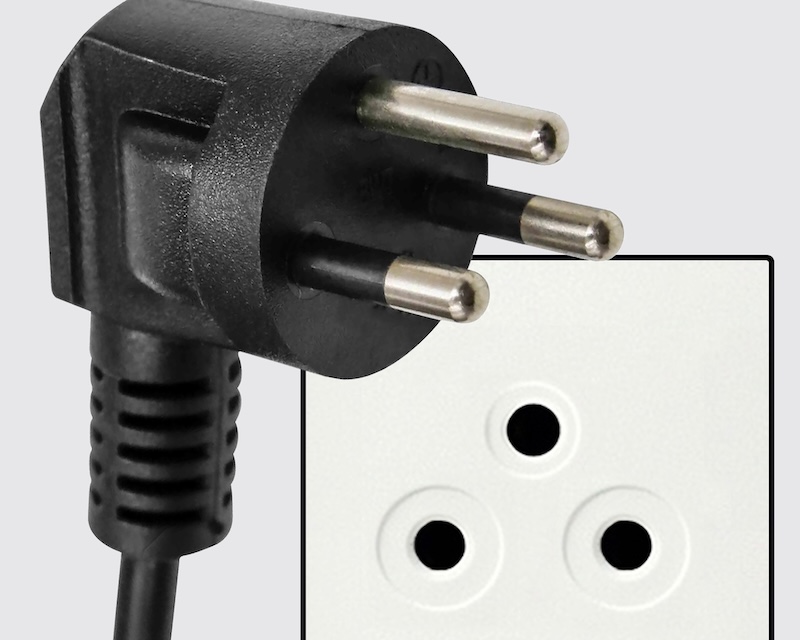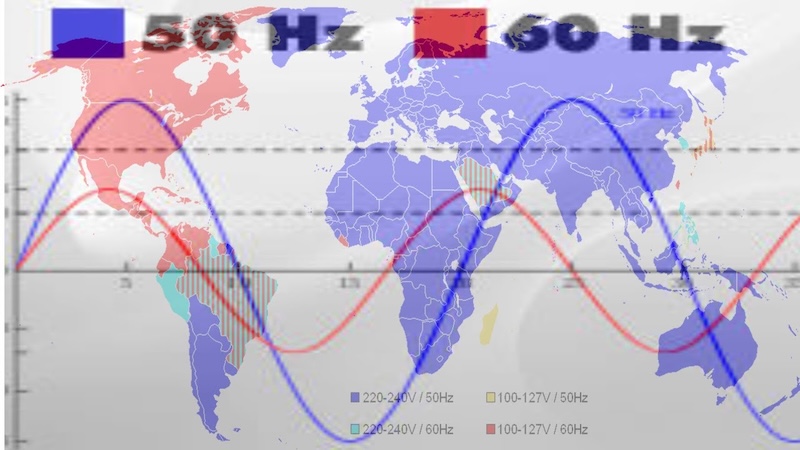There is not only a physical difference between plugs, but also an issue of electrical incompatibility. There are various voltages as well as frequencies used throughout the world. For instance, the United States uses 110-120V (60 Hz), while in many other countries, 220-240V (50 Hz) is used. This is because the electrical standards were originally established by the individual countries and at the time, there was no international standardization.
Please Note: As voltage can differ from country to country, you may need to use a voltage converter or transformer. It can be extremely dangerous to use an electrical appliance that is rated at a voltage different than the power supplied. The information provided here is deemed reliable, but not guaranteed and should be independently verified.
Type A / B Plug
Found In: Belize, Canada, Costa Rica, El Salvador, Guatemala, Honduras, Japan, Mexico, Nicaragua, Panama, and United States.
Standard (120 V) plugs have either two (ungrounded type A) or three prongs (grounded type B).
The third prong is the “ground” and is important for ensuring safe operation of the electrical device. It protects the user from dangerous electrical shock if for instance there is an electrical fault involving the appliance’s metal casing.
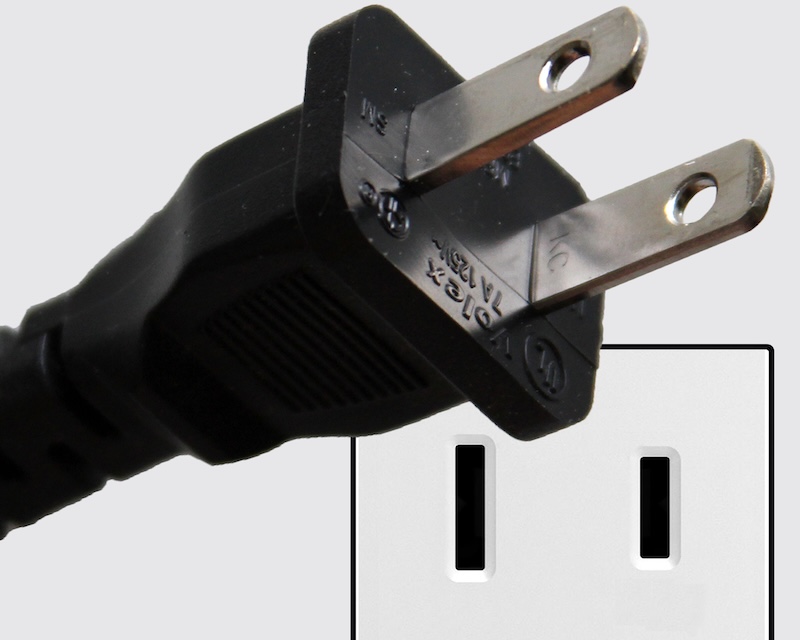
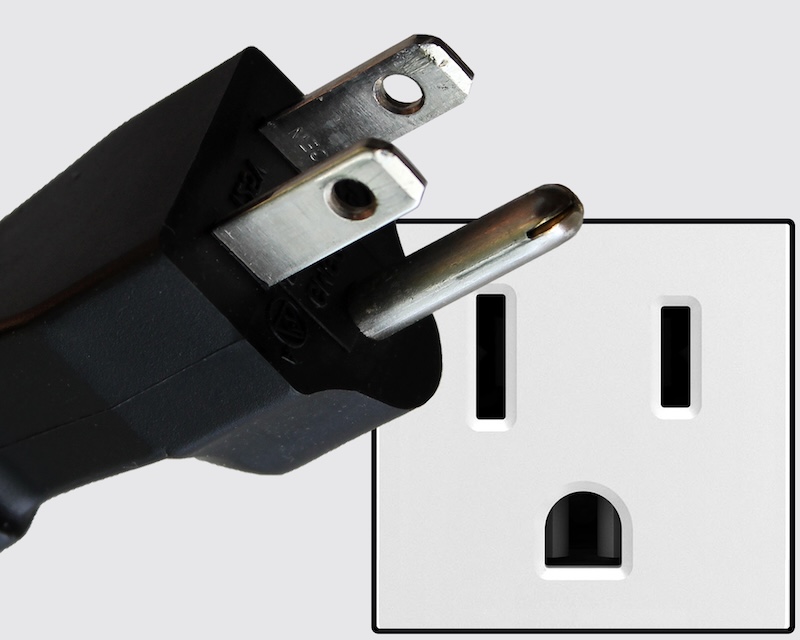
Type C Plug
Found In: all countries of Europe except the Cyprus, Ireland, Malta, and United Kingdom.
Type C is the most widely used plug internationally. This kind of socket is the older and ungrounded variant of the type E, F, J, K, L, N and O socket. Now most countries demand grounded sockets to be installed in new buildings.
This plug is commonly known as the Europlug and typically operates on a voltage range of 220-240 V. A Type C plug is compatible with a Type H, J, K, or L socket, but the appliance is not grounded in this scenario.
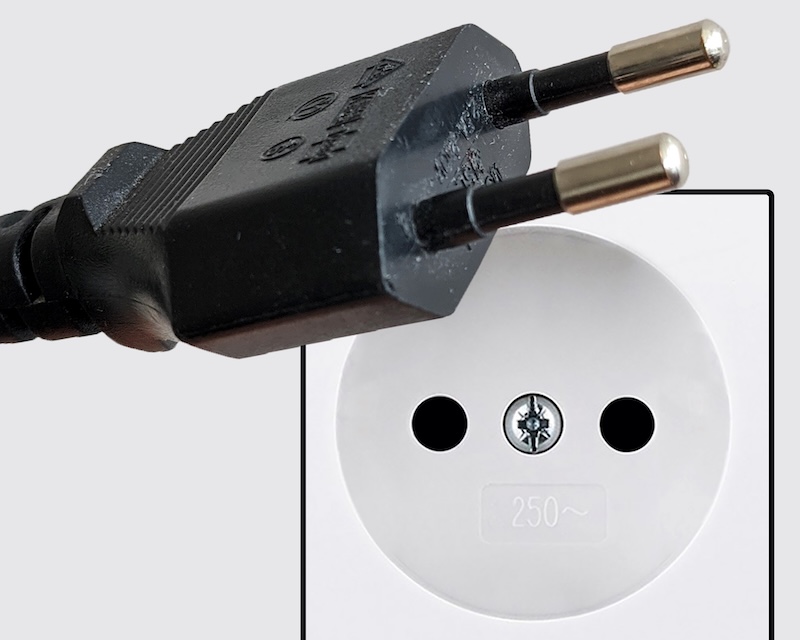
Type D Plug
Found In: India and Nepal.
Type D is technically known as BS 546 and typically operates on a voltage range of 220-240 V with a 5 amp rating.
This plug resembles the South African Type M, but its pins are much smaller. The top pin is larger than the other two.
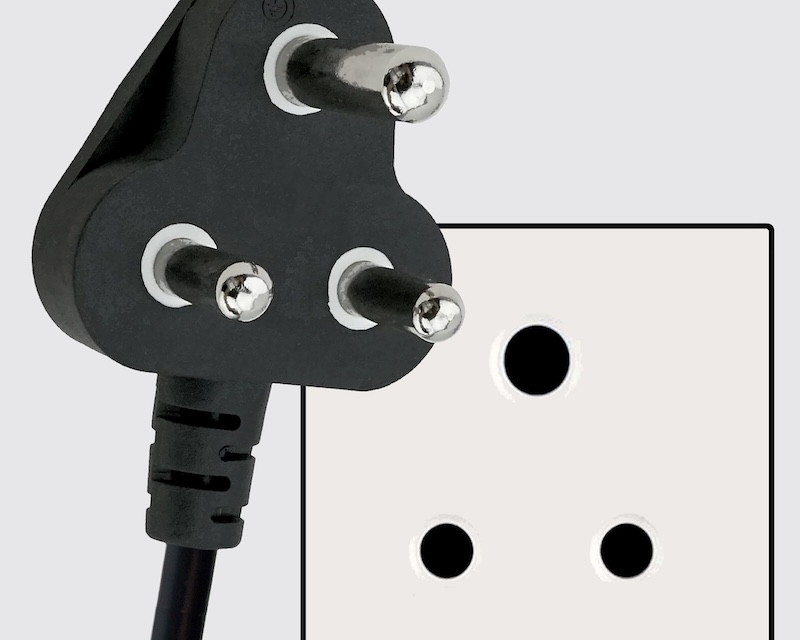
Type E Plug
Found In: Belgium, Czech Republic, France, Morocco, Poland, Slovakia, and Tunisia.
This plug typically operates on a voltage range of 220-240 V. The E socket has a round male pin, which is permanently mounted in the socket.
Fortunately, type E plugs are fully compatible with type F sockets and the other way around.
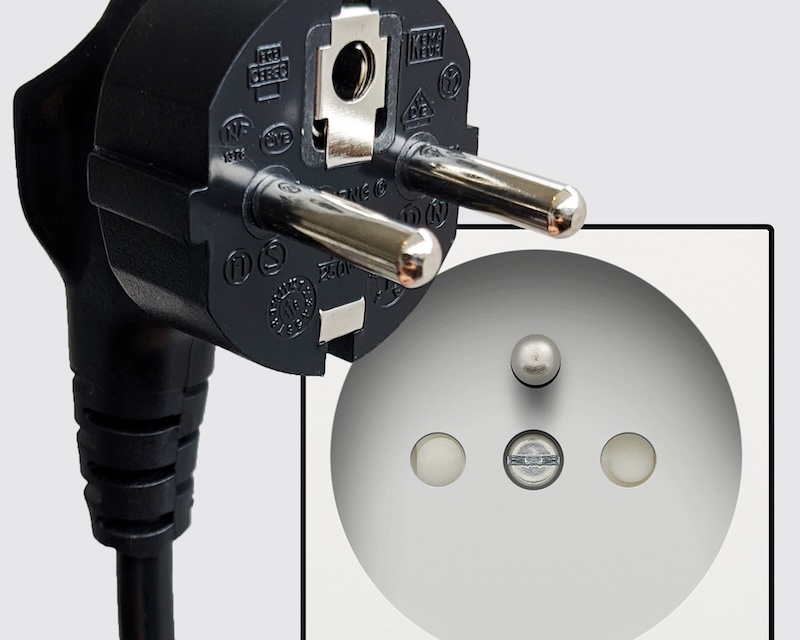
Type F Plug
Found In: Austria, Finland, Germany, the Netherlands, Norway, Portugal, Sweden, and Spain.
This plug was designed in Germany shortly after World War I and typically operates on a voltage range of 220-240 V. Type F is similar to C except that it is round and has the addition of top and bottom indentations with conductive clips in them to ground the appliance.
Fortunately, type F plugs are fully compatible with type E sockets and the other way around.
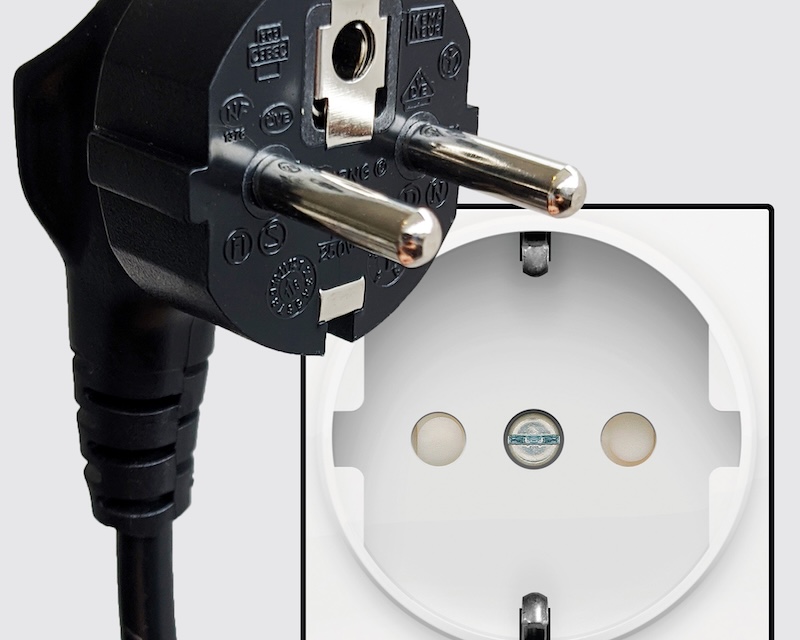
Type G Plug
Found In: Bahrain, Cyprus, Hong Kong, Iraq, Ireland, Jordan, Kuwait, Malta, Malaysia, Oman, Qatar, Saudi Arabia, Singapore, United Arab Emirates (UAE), United Kingdom, and Yemen.
This plug is commonly known as the 13-amp plug and technically known as the BS 1363. It typically operates on a voltage of 230 V.
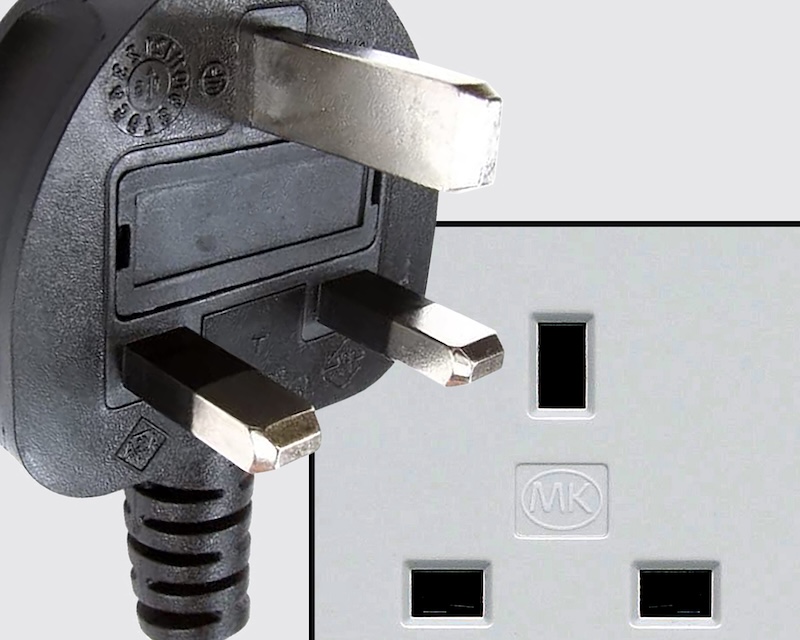
Type H Plug
Found In: Israel and Palestine.
A Type H plug typically uses a voltage range of 220-240 V, with the plug being designed for a 16 amp rating. The plug and socket are grounded.
A Type C plug is compatible with a Type H socket.
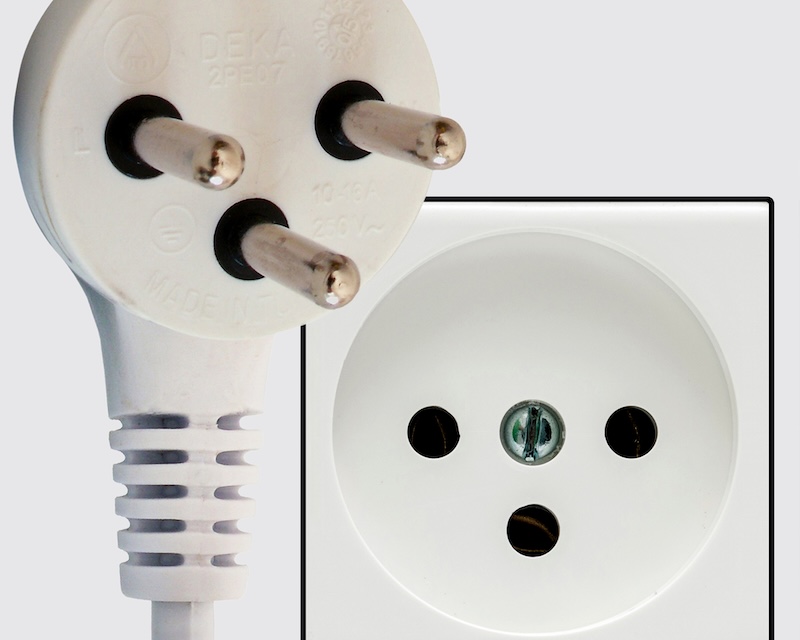
Type I Plug
Found In: Argentina, Australia, China, New Zealand, and Papua New Guinea.
A Type I plug typically uses a voltage range of 220-240 V, with the plug being designed for a 10 amp rating. The plug and socket are grounded.

Type J Plug
Found In: Liechtenstein and Switzerland.
A Type J plug typically uses a voltage of 230 V, with the plug being designed for a 10 amp rating. The plug and socket are grounded.
A Type C plug is compatible with a Type H, J, K, or L socket, but the appliance is not grounded in this scenario.
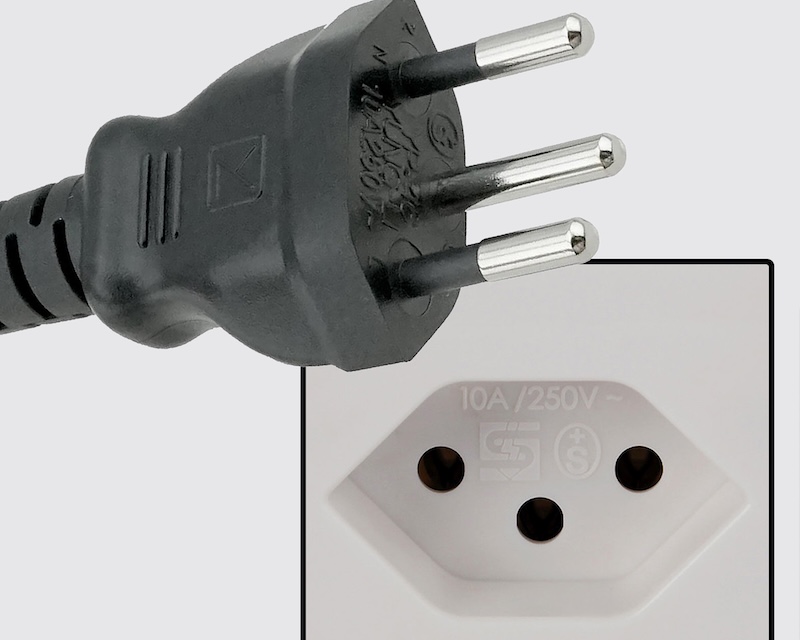
Type K Plug
Found In: Denmark and Greenland.
The Danish standard is described as DS 60884-2-D1. Unlike the similar Type E plug, the grounding pin is not mounted in the receptacle, but is U-shaped on the plug itself.
A Type K plug typically uses a voltage range of 220-240 V, with the plug being designed for a 16 amp rating. The plug and socket are grounded.
A Type C plug is compatible with a Type H, J, K, or L socket, but the appliance is not grounded in this scenario.
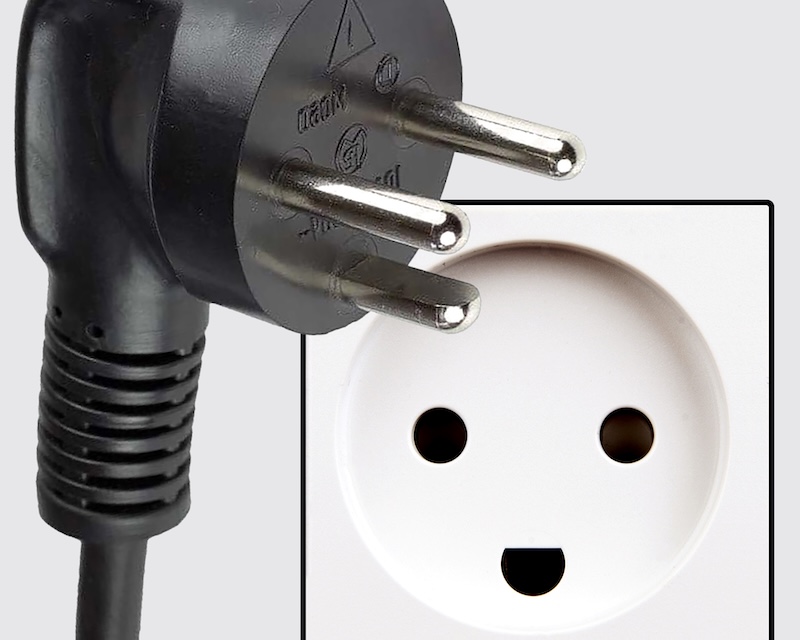
Type L Plug
Found In: Chile, Italy, Uruguay, and some parts of North Africa.
The Italian standard is described as CEI 23-16/VII and includes two styles rated at 10 and 16 amps. Both plug styles consist of three rounded pins place in a straight line. The 10 amp version has 4 mm round pins, while the 16 amp version has 5 mm round pins with the pins farther apart.
A Type L plug typically uses a voltage range of 220-240 V. The plug and socket are grounded.
A Type C plug is compatible with a Type H, J, K, or L socket, but the appliance is not grounded in this scenario.
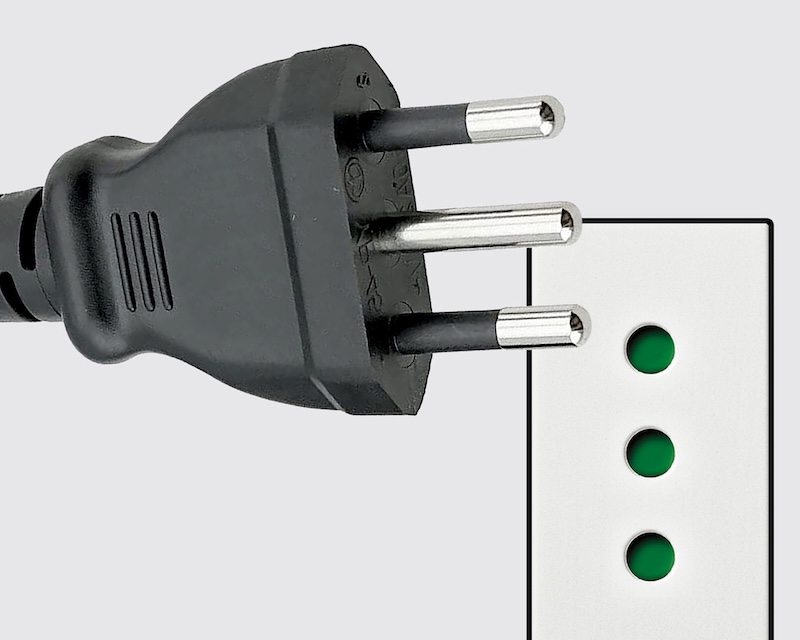
Type M Plug
Found In: Eswatini, Lesotho, and South Africa.
The South African standard is described as BS 546 and rated at 15 amps.
A Type M plug typically uses a voltage range of 220-240 V. The plug and socket are grounded.
This plug resembles the Indian Type D, but its pins are much larger. The top pin is larger than the other two.
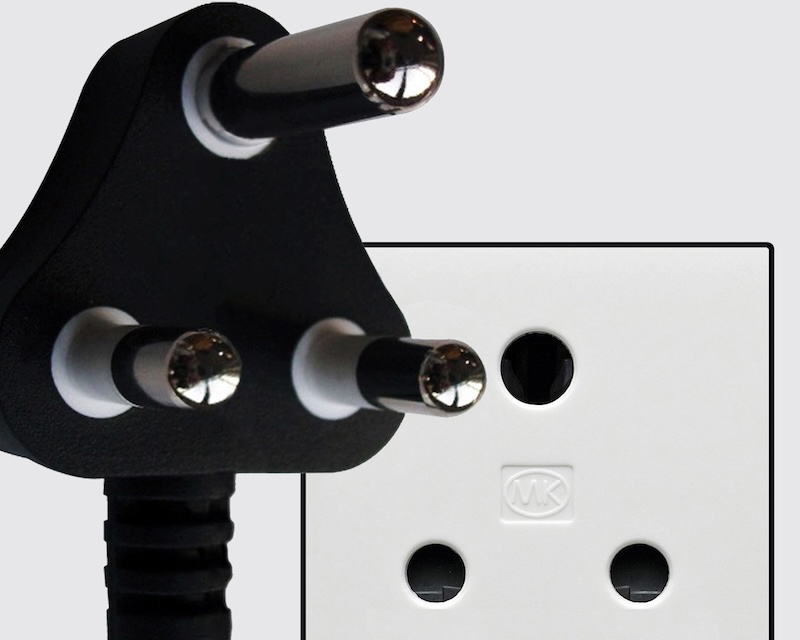
Type O Plug
Found In: Thailand.
The Thai standard is described as TIS 166-2549 and rated at 16 amps.
A Type O plug typically uses a voltage range of 220-240 V. The plug and socket are grounded.
